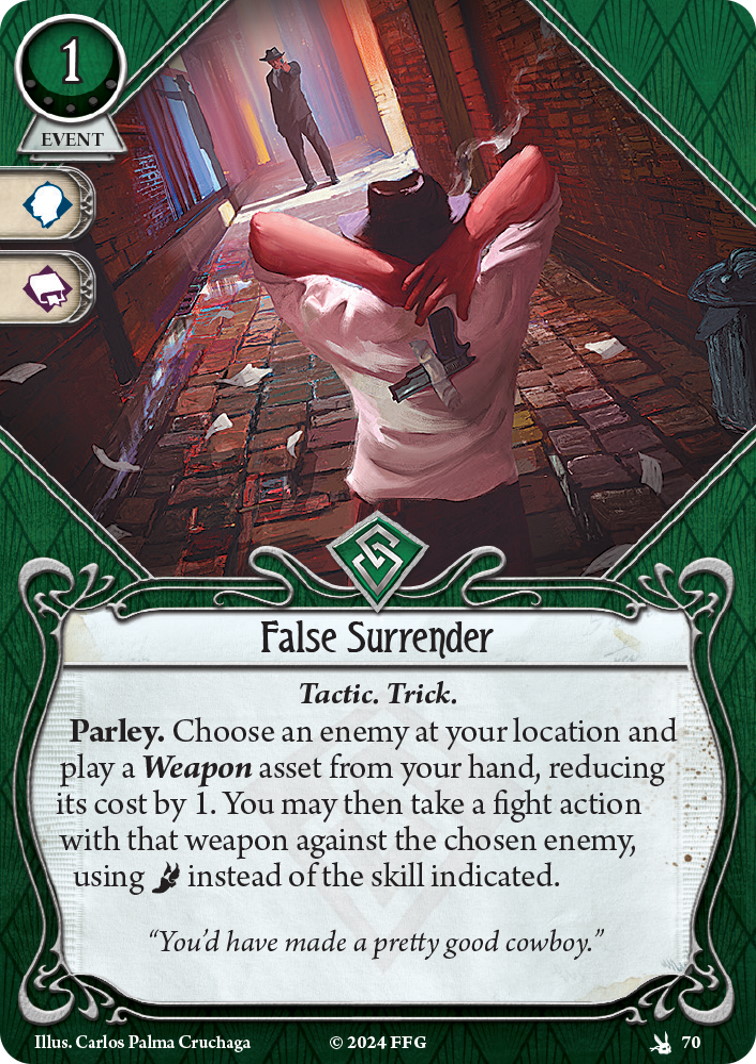
Duda. ¿Qué ataque tiene +1? El primer ataque o el segundo? Al indicar Ese ataque (that attack) por tiempo y posición, entiendo que el primer ataque es el que hace +1 de daño. Mientras que el segundo sería este (This)...

Duda. ¿Qué ataque tiene +1? El primer ataque o el segundo? Al indicar Ese ataque (that attack) por tiempo y posición, entiendo que el primer ataque es el que hace +1 de daño. Mientras que el segundo sería este (This)...

I really misread the card and now I can't delete this useless post.... if someone can, please do it.

So we are talking about e.g. throwing the Necronomicon at an enemy with +3 fight and after dealing 3 dmg to it without spending 4 secrets ? And that we can do at least 2 times. Thats a very refreshing way to abuse that old thingy.

pretaboo: Silas Marsh with Versatile can commit all his hand into dodge/attack test and double it, even Rise to the Occasion x2 if wanted - surpassing it by tons of value (+6? +8?), => then just grab net/spear back to the hand with all skills commited. Imagine you Evade as 1st action, get +4 actions, then attack for +4 actions again and +tons of damage +card draws etc. Get 3 resources (if have none), put spear again - play all hand again. Melting bosses.
Fun, but forbidden for a reason.

This is a really good card for anyone fighting with bows, swords, or Mauser-style guns. (With automatics it probably gets outshined by Sleight of Hand
You spend 1 card, 1 action, and the normal resource cost of your weapon to put the weapon into play and make an attack with it. That works out to making this basically read "0 cost, fast: gain a bonus action" as long as you draw it before you need to play your weapon, which is already pretty good. The going rate for bonus actions tends to be 2 resources, and while most are less situational than this one, 0 is a lot better than 2.
But it's more than just a bonus action card. It
In your level 0 deck the first bullet point is probably the most important. Low-XP investigators are slow to set up and struggle to find everything they need. Lacking good tutoring and burst economy they often must make awkward choices about what to prioritize putting into play. Engine cards like Leo or Lone Wolf generate more value the sooner you get them down, and Lockpicks only gives you 1 investigate per turn, so putting off getting your weapons down is often tempting, but dangerous. This gives you an extra turn or two to set up.
As you start upgrading though, you'll find this has so many good interactions that it almost accidentally accumulates bonus value. You can make this fast with Chuck, Roland, Alessandra, Farsight, and so on. You can turn a resource profit with Sleuth or Crafty. You can find it with Friends or Plan or Bewitching. You can use it with Fine Clothes to set up Exploit Weakness, and so on.